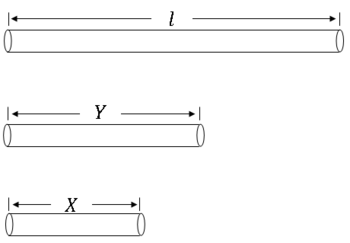m (Protected "ECE600 F13 Conditional Expectations for Two Random Variables mhossain" [edit=sysop:move=sysop]) |
|||
| (3 intermediate revisions by 2 users not shown) | |||
| Line 3: | Line 3: | ||
[[ECE600_F13_notes_mhossain|Back to all ECE 600 notes]] | [[ECE600_F13_notes_mhossain|Back to all ECE 600 notes]] | ||
| + | |||
| + | [[Category:ECE600]] | ||
| + | [[Category:probability]] | ||
| + | [[Category:lecture notes]] | ||
| + | [[Category:slecture]] | ||
<center><font size= 4> | <center><font size= 4> | ||
| − | '''Random Variables and Signals''' | + | [[ECE600_F13_notes_mhossain|'''The Comer Lectures on Random Variables and Signals''']] |
</font size> | </font size> | ||
| + | |||
| + | [https://www.projectrhea.org/learning/slectures.php Slectures] by [[user:Mhossain | Maliha Hossain]] | ||
| + | |||
<font size= 3> Topic 16: Conditional Expectation for Two Random Variables</font size> | <font size= 3> Topic 16: Conditional Expectation for Two Random Variables</font size> | ||
</center> | </center> | ||
| − | |||
---- | ---- | ||
| − | + | ---- | |
If X and Y are random variables on (''S,F'',P) and ∈ ''F'' with P(M) > 0, then, <br/> | If X and Y are random variables on (''S,F'',P) and ∈ ''F'' with P(M) > 0, then, <br/> | ||
<center><math>E[g(X,Y)|M] = \int\int_{\mathbb R^2} g(x,y)f_{XY}(x,y|M)dxdy</math></center> | <center><math>E[g(X,Y)|M] = \int\int_{\mathbb R^2} g(x,y)f_{XY}(x,y|M)dxdy</math></center> | ||
| Line 66: | Line 73: | ||
E[g(X,Y)]&=\int_{\mathbb R}E[g(X,Y)|X=x]f_X(x)dx \\ | E[g(X,Y)]&=\int_{\mathbb R}E[g(X,Y)|X=x]f_X(x)dx \\ | ||
&= \int_{\mathbb R}h(x)f_X(x)dx \\ | &= \int_{\mathbb R}h(x)f_X(x)dx \\ | ||
| − | &=h(X) | + | &=E[h(X)] |
\end{align}</math></center> | \end{align}</math></center> | ||
| Line 89: | Line 96: | ||
\end{align}</math></center> | \end{align}</math></center> | ||
| − | We do not know f<math>_{XY}</math> or | + | We do not know f<math>_{XY}</math> or f<math>_X</math>, but we know f<math>_{X|Y}</math> or f<math>_Y</math><br/> |
<center><math>\begin{align} | <center><math>\begin{align} | ||
f_Y(y)&=\frac{1}{l}\qquad\ &0\leq y\leq l \\ | f_Y(y)&=\frac{1}{l}\qquad\ &0\leq y\leq l \\ | ||
| Line 96: | Line 103: | ||
Use E[X]=E[E[X|Y]]. Now <br/> | Use E[X]=E[E[X|Y]]. Now <br/> | ||
| − | <center><math>h( | + | <center><math>h(y)\equiv E[X|Y=y] = \frac{y}{2}</math></center> |
since X is uniform on [0,y] given Y=y. So, <br/> | since X is uniform on [0,y] given Y=y. So, <br/> | ||
<center><math>h(Y)=\frac{Y}{2}</math></center> | <center><math>h(Y)=\frac{Y}{2}</math></center> | ||
Latest revision as of 12:13, 21 May 2014
The Comer Lectures on Random Variables and Signals
Topic 16: Conditional Expectation for Two Random Variables
If X and Y are random variables on (S,F,P) and ∈ F with P(M) > 0, then,
One important case is when M = {Y = y} for some y ∈ R. Then we have that
Using our old trick, let
Using this approach, it can be shown that
Another important case: g(X,Y)=g(X)
Note that this is the same equation we had, for example
Iterated Expectation
Sometimes we want to work with f$ _{Y|X} $(y|x) and f$ _X $(x) instead of f$ _{XY} $(x,y). This can make computation of E[g(X,Y)] easier in some cases. We can write
Note that E[g(X,Y)|X=x] is a function of x ∈ R. We will call this function h.
We can create a random variable h(X). We will use the notation
So we have
which is a real-valued function of x ∈ R, and h(X), which is a random variable since it is a function of random variable X.
Now we can write
So,
We call this iterated expectation.
An important special case is when g(X,Y)=Y, in which case, we have
Example $ \qquad $ Suppose we have a stick of length l. We break the stick at a uniformly chosen point Y, then again at a uniformly chosen point X. Find E[X].
We do not know f$ _{XY} $ or f$ _X $, but we know f$ _{X|Y} $ or f$ _Y $
Use E[X]=E[E[X|Y]]. Now
since X is uniform on [0,y] given Y=y. So,
Then
References
- M. Comer. ECE 600. Class Lecture. Random Variables and Signals. Faculty of Electrical Engineering, Purdue University. Fall 2013.
Questions and comments
If you have any questions, comments, etc. please post them on this page


